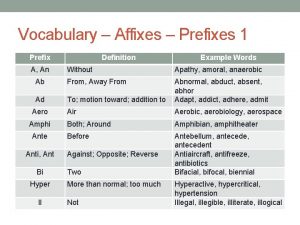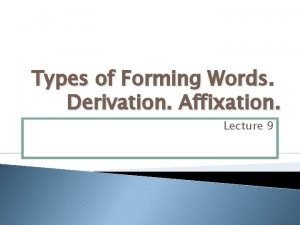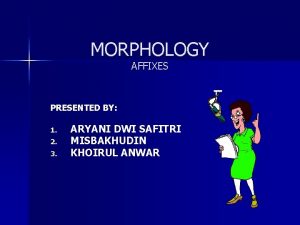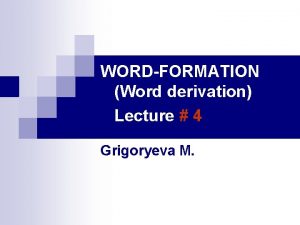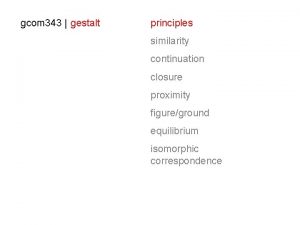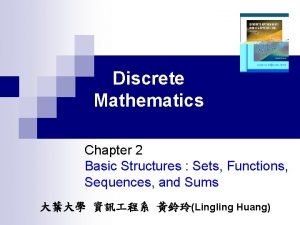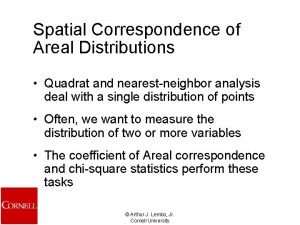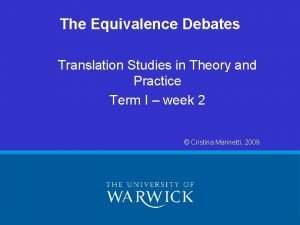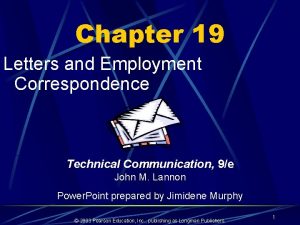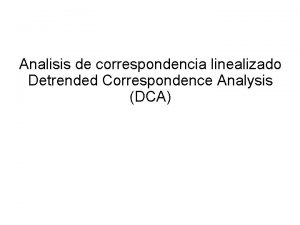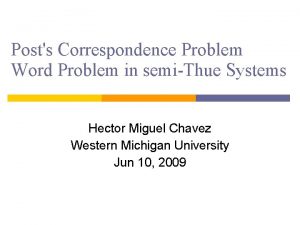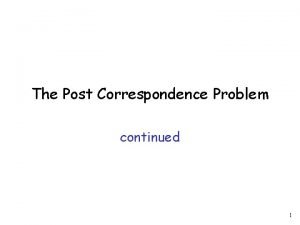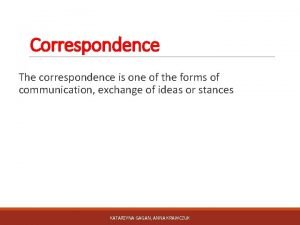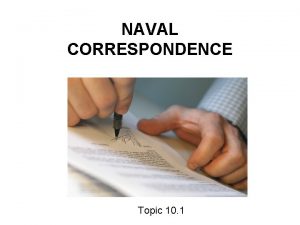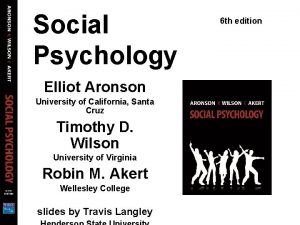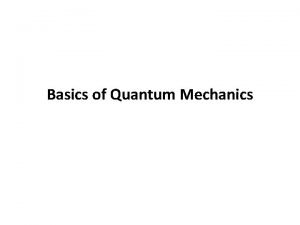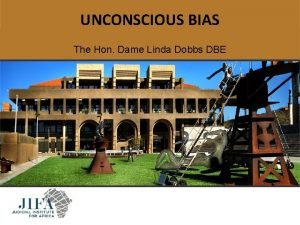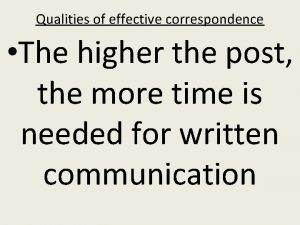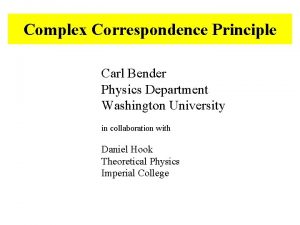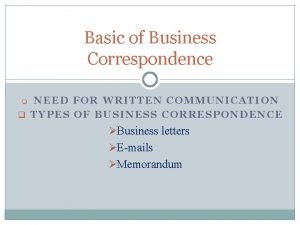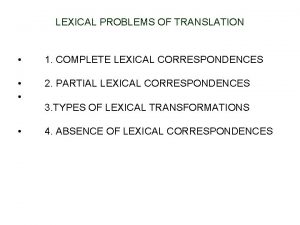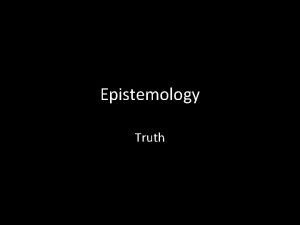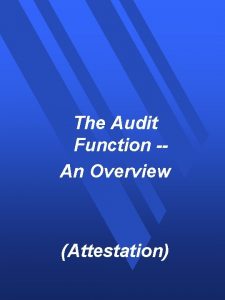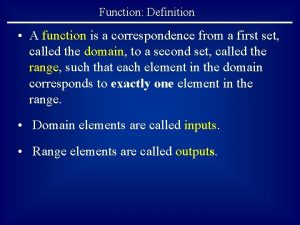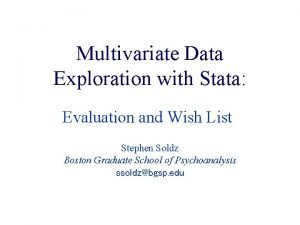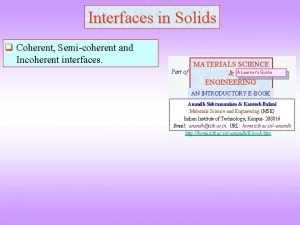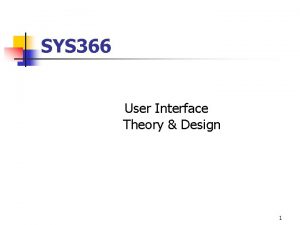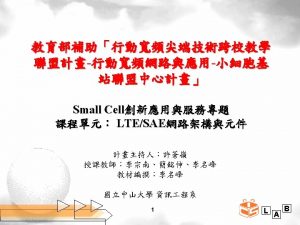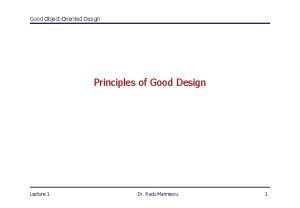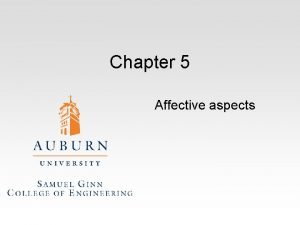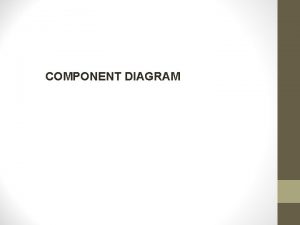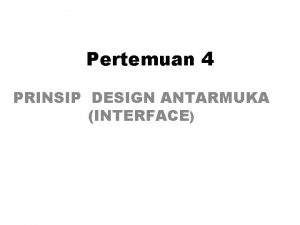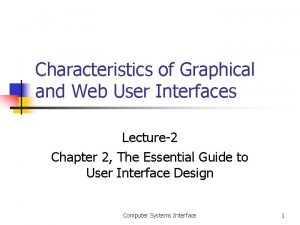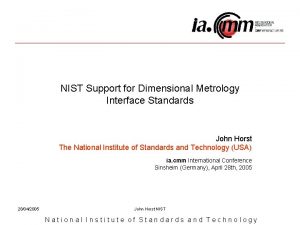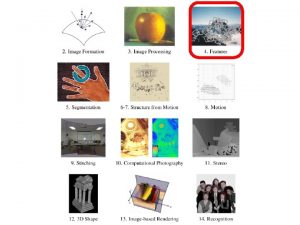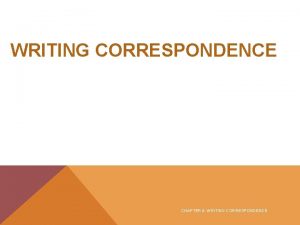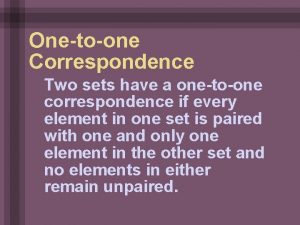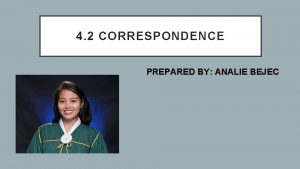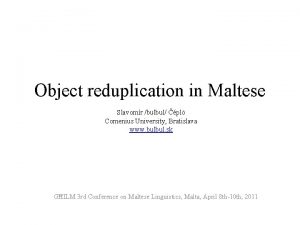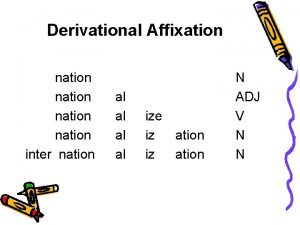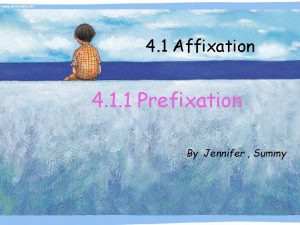Outputoutput correspondence Phonologymorphology interface Levelrelated affixation Reduplication Hypochoristics









![Reduplication in Lardil Reduplicant consists of two syllables [kele-th] kele-kele ‘to cut’ [pareli-th] pareli Reduplication in Lardil Reduplicant consists of two syllables [kele-th] kele-kele ‘to cut’ [pareli-th] pareli](https://slidetodoc.com/presentation_image_h/329ed55a7a338132232529e24857b059/image-10.jpg)




![Underapplication In reduplication, though the vowel of the reduplicant is always [i], no palatalization Underapplication In reduplication, though the vowel of the reduplicant is always [i], no palatalization](https://slidetodoc.com/presentation_image_h/329ed55a7a338132232529e24857b059/image-15.jpg)















![French also has: Reduplications (Echo-words) = [s s'] / (C)V père –> pépère, ours French also has: Reduplications (Echo-words) = [s s'] / (C)V père –> pépère, ours](https://slidetodoc.com/presentation_image_h/329ed55a7a338132232529e24857b059/image-31.jpg)


































- Slides: 65

Output-output correspondence • Phonology-morphology interface – Level-related affixation – Reduplication – Hypochoristics • Gradient attraction • Syntax-morphology interface – Case – Passive morphology – ECM constructions – Coordinate structures 10. 03. 2021 1

Output-output correspondence • Output-output correspondence was introduced by Mc. Carthy & Prince (1995) to account for morphologically-based phonological effects. • Instead of taking an input as a reference, a morphological operation applies to a ready output, a form which has already been through phonology. • Faithfulness to input is ranked differently than correspondence between two outputs. 10. 03. 2021 2

Output-output correspondence Definition of Correspondence (Mc. Carthy & Prince 1995: 262): Given two strings S 1 and S 2, correspondence is a relation R between the elements of S 1 and those of S 2. When a R b, the elements a of S 1 and b of S 2 are called correspondents of each other. 10. 03. 2021 3

The notion of correspondence is vague. The correspondence relation takes its substance from a series of constraints implementing the kind of relation needed in each case: MAX (no deletion), DEP (no epenthesis) Additional constraints are: IDENT(F), LINEARITY (saying something about the ordering of the elements) CONTIGUITY (saying something about the adjacency of elements), ANCHOR-Edge (about the edges of the corresponding elements), HEAD-MATCH (if one of the correspondent has a head, its correspondent has the same head), etc. 10. 03. 2021 4

Input-Output faithfulness and Output-Output correspondence Input (full model) F C Output 1 Output 2 Prediction of the Correspondence Theory IO-Faith >> Prosodic Constraints >> OO-Faith/Corr or OO-Faith/Corr >> Prosodic Constraints >> IO-Faith Relations betw. Input and Output 2 are assumed to be rare. 10. 03. 2021 5

Correspondence 10. 03. 2021 6

1. Reduplication is a morphological operation (often plural, iterative, habituative, intensifier …) consisting in copying (reduplicating part or whole of a stem). According to Mc. Carthy & Prince, only ‘authentic’ prosodic constituents (syllables, feet, prosodic words…) can be reduplicants. Ilokano Reduplicant Template: Heavy syllable (Mc. Carthy & Prince 1995) s / m m 10. 03. 2021 7

Reduplication in Ilokano Reduplicant consists of a closed syllable tra. ba. ho trab - tra. ba. ho ‘work’ Red Stem Reduplicant consists of a syllable with a long vowel ró÷ot ro: - ró÷ot ‘litter’ Red Stem 10. 03. 2021 8

Reduplication Lardil Reduplicant Templates (Mc. Carthy & Prince 1995): Binary feet F / s s 10. 03. 2021 F | s / m m 9
![Reduplication in Lardil Reduplicant consists of two syllables keleth kelekele to cut parelith pareli Reduplication in Lardil Reduplicant consists of two syllables [kele-th] kele-kele ‘to cut’ [pareli-th] pareli](https://slidetodoc.com/presentation_image_h/329ed55a7a338132232529e24857b059/image-10.jpg)
Reduplication in Lardil Reduplicant consists of two syllables [kele-th] kele-kele ‘to cut’ [pareli-th] pareli parel-pareli ‘to gather’ Reduplicant consists of a heavy syllable [la-th] latha laa-la ‘to guide’ [˜aali-th] ˜aali ˜aal-˜aali ‘to be thirsty’ 10. 03. 2021 10

Why does reduplication needs OOcorrespondence? • In some languages, the segmental make-up (so-called melody, a misnomer) of the reduplicant copies the segmental make-up of the full form, rather than taking its raw material from the input. Two cases: - overapplication: a phonological process has seemed to apply, though its context of application is not visible at the surface (non-surface apparent) - underapplication: a phonological process does not apply, though its context of application is present at the surface (non-surface true) 10. 03. 2021 11

Overapplication In Javanese, there is a process of h-deletion taking place intervocally: Javanese h-deletion Root+my an´h-ku arah-ku 10. 03. 2021 Root+Dem. an´-e ‘strange’ ara-e ‘direction’ 12

Overapplication In reduplication this process takes also place in environements other than intervocalic. The phonological result of h-deletion is copied from the base to the reduplicant. Reduplication: Overapplication of h-deletion bedah-bedah beda-e ‘broken’ dajøh-dajøh dajø-e ‘guest’ 10. 03. 2021 13

Underapplication In Akan, there is a process of palatalization. Coronals are affricated before a front vowel, and /h/ is realized as a palatal fricative. Palatalization in Akan t∫´ *k´ dΩe *de çi *hi 10. 03. 2021 ‘divide’ ‘receive’ ‘border’ 14
![Underapplication In reduplication though the vowel of the reduplicant is always i no palatalization Underapplication In reduplication, though the vowel of the reduplicant is always [i], no palatalization](https://slidetodoc.com/presentation_image_h/329ed55a7a338132232529e24857b059/image-15.jpg)
Underapplication In reduplication, though the vowel of the reduplicant is always [i], no palatalization takes place. The consonant of the base is faithfully copied. Reduplication ki-ka÷ *t∫i-ka÷ ‘bite’ hi-haw÷ *çi-haw÷ ‘trouble’ 10. 03. 2021 15

2. Different levels of affixation It has been observed that affixes appear in a certain order, and that they behave as classes of affixes w. r. t. this property. In English, besides other morphological operations like compounding and inflection, two levels of derivational affixation have been described. - Level I affixes which influence the phonology of the stem: -ic, -ation, -al - Level II affixes which do not: -less, -ness, -y, -ing 10. 03. 2021 16

- Level II affixes are peripheral to Level I affixes. (but see Fabb 1988 who showed that more restrictions are at play than just ordering) To account for this, Kiparsky, Mohanan and others developed a model of Lexical Phonology, in which morphology and phonology are interleaved: Some morphology applies (level I affixation), then phonology. Phonology consists of a set of ordered rules. After completion of phonology, some morphology applies (level II affixation), then the whole phonology applies again. 10. 03. 2021 17

Level II phonology has no access to morphological information provided at earlier levels (and vice-versa): we thus have a cyclic model of the morphologyphonology interactions (but see Mohanan who allows loops in Malayalam). When all levels have been completed (there may be more than two), the so-called post-lexical phonology applies, which is the sentence-level phonology. This phonology is automatic, applies in all contexts, and doesn’t care about levels. Final Devoicing in German is an example of this type. 10. 03. 2021 18

Why does affixation needs OOcorrespondence? OT has problems with the results of Lexical Phonology. It can replace the set of ordered rules inside of each level, but the levels themselves are more difficult to account for. Some examples: 10. 03. 2021 19

Why does affixation needs OOcorrespondence? Level ordering of affixes (Benua 1995): New York. Philadelphia dialects (æ-tensing: E is tense) Unaffixed class [kl. Es] mass [m. Es] pass [p. Es] 10. 03. 2021 Class 1 Affix classic [klæ. sik] massive [mæ. sˆv] passive [pæ. sˆv] Class 2 Affix classy [kl. E. si] massable [mæ. s-] passing [pæ. sˆ˜] 20

Why does affixation needs OOcorrespondence? A standard kind of OT cannot account for the different vowel in the stem of these words, due to the different kind of affixation. The alternation between the two kinds of vowels is due to syllabification: Benua has the following constraint: æ-tensing (*æC]s) This constraint cannot be ranked as to deliver all forms properly. 10. 03. 2021 21

Benua (1995) proposes to account for level II affixes with correspondence to related outputs, in the examples above class, pass, and so on. Level I affixes take the input as input, and level II affixes take the output of class and pass as inputs. The faithfulness to the output, when relevant, is assumed to be greater than the faithfulness to the input. This explains why level II affixes do not trigger much phonological changes in the stem. 10. 03. 2021 22

10. 03. 2021 23

A second example of Benua: condemn/ condemnation / condemning -ation is a class 1 suffix and takes the input as base -ing is a class 2 suffix and takes the output as base 10. 03. 2021 24

10. 03. 2021 25

10. 03. 2021 26

10. 03. 2021 27

3. Hypochoristics A third kind of morphological process for which OOcorrespondence has been assumed is hypochoristic formation. A first example comes from the i-formation in German which consist of a syllabic trochee, the unmarked (but not the minimal foot) of German: Prosodic Constraint on German i-formations = F = [s's] 10. 03. 2021 28

Katharína –> Káthi Bénjamin –> Bénni Klínsmann –> Klínsi Andréas –> Ándi Mánfred –> Mánni Wílhelm –> Wílli Wést/Ostdeutscher –> 10. 03. 2021 Tóm –>Tómmi Úlrich –> Úlli Hirn –> Hirni Gabriéle –> Gábi Wáltraud –> Wálli Cornélia –> Cónni Wéssi / Óssi 29

Many languages build hypochoristics in a similar way. Prosodic Constraint in French Hypocoristics = F = [s] or [ss'] True hypochoristics: Véronique Véro Dominique Domi, Dom, Do Bénédicte Béné Elisabeth Zabeth, Babé, Babette, Beth 10. 03. 2021 30
![French also has Reduplications Echowords s s CV père pépère ours French also has: Reduplications (Echo-words) = [s s'] / (C)V père –> pépère, ours](https://slidetodoc.com/presentation_image_h/329ed55a7a338132232529e24857b059/image-31.jpg)
French also has: Reduplications (Echo-words) = [s s'] / (C)V père –> pépère, ours –> nounours, main –> main-main The input to these reduplications is a monosyllabic word. But the syllabification is not part of the input: it is an added structure pointing to the fact that these reduplications are faithful to an output rather than to an input. 10. 03. 2021 31

IO-Faithfulness >> Prosodic Constraints >> BTFaithfulness The emergence of the unmarked (TETU) is a landmark of this pattern. The prosodic constraints in the middle are responsible for the unmarked pattern of the language: bisyllabic foot, trochaic pattern, open syllables … 10. 03. 2021 32

If the relation between input and output is active, the unmarked form has no chance to emerge, since all kinds of inputs are there, and faithfulness is high. But the forms entering the relation OO have a chance to emerge as unmarked, since the prosodic constraints are higher. Trochaic feet (iambic in the case of French, open syllables and the like) emerge. 10. 03. 2021 33

Conclusion and open problems 1. Since correspondence is a vague notion, all kinds of forms should be able to enter into a correspondence relation. How can we delimit the desirable correspondence relations from the undesirable ones? 2. OO-constraints lead to an explosion of the constraints. 3. OO-correspondence needs an existing output in order to be workable. In some cases, surface forms seem to be faithful to a form which is never realized as an output. In those cases, we have opacity. 10. 03. 2021 34

Conclusion and open problems 4. Lexical Phonology, as well as all models using ordered rules have no problems with opacity. The existence of intermediate forms, neither inputs nor outputs, is a natural consequence of rule ordering. 5. OT has big problems with those. Since no derivation enters phonology, no intermediate step should ever be needed. 6. We will see later on that alternative solutions have been offered to the opacity problem. 10. 03. 2021 35

Gradient attraction • If output correspondence is needed anyway, why not treat all kinds of morphological relationships as output-output correpondences? • This is the step taken by Burzio (to appear) in his Gradient Attraction theory. • Burzio claims that similar (output) representations attract each other and that they do so gradiently. The more similar they are, the greater the attraction. 10. 03. 2021 36

Modified OT (Burzio, to appear) other representations Input –> Grammar –> Output The other representations are forms which are related in terms of morphemic parenthood or of analogy. 10. 03. 2021 37

Gradient attraction • Allomorphs consist to a large extent of the same segmental material and have (partly) the same semantic representation. • But they also contrast with each other in order to keep their distinctness (Flemming’s dispersion theory) • Gradient attraction is different from output-output correspondence. One of the reasons os that allophonic variations of complex words can be triggered not only by the stem but also by the affix(es). 10. 03. 2021 38

Examples • Stress position 1: titánic is attracted not only by títan but also by barbáric and dynámic • Stress position 2: módernist is influenced by módern and not by the one of modérnity, because -ist adjoins only to adjectival bases. 10. 03. 2021 39

• Segmental alternation: allophony of french gros, grosse and gros ‘fat’ with liaison. • According to Burzio, the third form is attracted by both other forms, takes its vowel quality from the feminine form and its consonant from the masculine (both facts are unfortunately wrong! The vowel quality is always the same, and the liaison consonant is voiced. ) • Steriade cites a much better example also from French: an adjective like ancien ‘old’ has three allomorphs: [ãsj´]~, [ãsj´n] and [ãsj´~n]. The liaison case takes ist vowel quality from the masculine and ist vowel from the feminine. 10. 03. 2021 40

OO-Correspondence in Syntax? With syntax, there seems to be little compelling evidence for the need for output-output correspondence. Possible evidence for OOcorrespondence in the syntax comes from at least two domains: the syntax-morphology interaction coordinate structures 10. 03. 2021 41

Syntax-Morphology Interaction Alternations that affect grammatical functions tend to minimize differences among the various construction types In a representational model, this suggests an influence of OO-correspondence. One case in point is the rule for Case marking in the German passive 10. 03. 2021 42

Case rules for the active clause Nom: Acc: NPs bear nominative case NPs that are not the highest argument bear accusative case Dat: NPs that are neither the highest nor the lowest argument bear dative case +Uniqueness, etc. 10. 03. 2021 43

Case rules for the active clause Er kommt he comes nom er sieht ihn he sees him nom acc er gibt ihr es he gives it to her nom dat acc 10. 03. 2021 44

Case rules in the passive What we find: Es wird ihr gegeben it-nom is her-dat given What we should get: *sie wird es gegeben she-nom is it given 10. 03. 2021 45

Case rules in the passive A possible account: Maximize faithfulness between the active and the corresponding passive! (00 -correspondence) The Alternative: Rule Ordering 1. Case potential is determined e. g. by a lexical rule 2. „Absorption“ of the accusative e. g. late in the syntax 10. 03. 2021 46

Case rules in other constructions Similar ideas can be applied to Complex predicates (retaining the Case of the preposition) jemanden anwinken someone. acc at-wave jemandem zuwinken someone. dat to-wave but. . . is this OO? 10. 03. 2021 47

Case agreement 1 ECM-constructions and Case Agreement interact in a fashion that may also be understood in terms of OOcorrespondence Case Agreement of some predicate nominals Ich bin ein Esel I-nom am a-nom donkey ich bleibe ein Esel I-nom remain a-nom donkey 10. 03. 2021 48

Case agreement 2 Case Agreement of adverbials er grüsst die Männer einen nach dem anderen he greets the-acc men one-acc after the other die Männer grüssen ihn einer nach dem anderen the men greet him one-nom after the other 10. 03. 2021 49

Case agreement 3 Predicates and some adverbs may take over the Case of the noun phrase they are linked to in terms of semantics. . . For ECM-constructions, we expect Case agreeing expressions to always take over the Case of the NP they are linked to. 10. 03. 2021 50

Case agreement in ECM-contexts But there seem to be two dialects: 1. Ich lasse ihn einen Helden sein I let him-acc an-acc hero be 2. Ich lasse ihn ein Held sein I let him-acc an-nom hero-nom be 1. Agreement maintained 2. Nominative maintained 10. 03. 2021 51

Case agreement in ECM-contexts 1. Ich lasse die Männer einen nach dem anderen ankommen I have the men one-acc after the other arrive 2. Ich lasse die Männer einer nach dem anderen ankommen I have the men one-nom after the other arrive 10. 03. 2021 52

Case agreement in ECM-contexts Solution 1: OO-Correspondence between the finite clause and the infinitive Solution 2: Case determination before nom > acc change in the subject position of the infinitive 10. 03. 2021 53

Summary The Case effects described so far may either be interpreted as being due to OO-correspondence lexical determination of Case, followed by a syntax-triggered change more complex Case rules 10. 03. 2021 54

Parallelism in coordinate structures It may thus make more sense to look at a construction type that bears some vague resemblance to reduplication --conjunctions. In principle, the two parts of a coordination construction are fairly independent of each other. . . . this changes when they are affected by a reduction operation. 10. 03. 2021 55

Parallelism in coordinate structures Scope is a very interesting example for this. Independent I introduced one of the boys to every teacher is scope-ambiguous: ONE > EVERY > ONE 10. 03. 2021 56

Parallelism in coordinate structures I introduced one of the boys to every teacher, and Bill did, too involving a reducing coordination, is two-ways ambiguous, NOT four ways, as one might expect! 10. 03. 2021 57

Parallelism in coordinate structures More examples an American runner seems to have won a gold medal, and a Russian athlete does, too the two indefinite NPs agree w. r. t. specificity one guard was seen in front of every building, and a policeman was, too. 10. 03. 2021 58

Parallelism in coordinate structures In an ellipsis/coordination reduction construction, the scope relations among the elements in clause A must be identical to the ones in clause B. In the Y-model of grammar, in which phonology and semantics do not communicate, this is difficult to account for. 10. 03. 2021 59

Parallelism in coordinate structures Across-the-board rule application was invented in order to account for such facts. Who did you meet t and invite t The parallelism facts fit neatly into OOcorrespondence, however. 10. 03. 2021 60

A special form of OO-correspondence Perhaps, quite a different concept of OOcorrespondence is called for in syntax. . . Many syntactic approaches assume more than one level of representation. . . Surface structure Logical Form Argument Structure 10. 03. 2021 61

A special form of OO-correspondence It has been observed that UG tries to minimize differences between these levels. This „economy of derivation“ may reflect OO-correspondence between different levels. 10. 03. 2021 62

A special form of OO-correspondence From a single input, two, three or more of such representations are generated. Minimal Link (=superiority) effects may reflect the attempt to minimize structural differences between lor. s (Müller, Williams) 10. 03. 2021 63

MLC 1 Who do you expect to say what *what do you expect who to say More relations of the premovement/declarative structure are preserved in the former example koj kogo mišliš 10. 03. 2021 who what saw 64

MLC 2 In the clitic (Wackernagel) position weil er es ihr gibt because he it her gives pronoun order has been claimed to be identical to base order. . . 10. 03. 2021 65
 Backformation linguistics
Backformation linguistics Mono root word
Mono root word Affixation
Affixation Affixation definition and examples
Affixation definition and examples Affixation
Affixation Morphological processes
Morphological processes Interface------------ an interface *
Interface------------ an interface * Interface in java
Interface in java Areas of the screen that behave as if they were independent
Areas of the screen that behave as if they were independent Office interface vs industrial interface
Office interface vs industrial interface Point to point correspondence and formal similarity
Point to point correspondence and formal similarity Principles of business letter
Principles of business letter Gestalt
Gestalt Onto function definition
Onto function definition Coefficient of areal correspondence
Coefficient of areal correspondence What is electronic correspondence
What is electronic correspondence Textual equivalence catford
Textual equivalence catford Employment correspondence
Employment correspondence Parsons career theory
Parsons career theory Correspondence function examples
Correspondence function examples Detrended correspondence analysis
Detrended correspondence analysis Modified post correspondence problem
Modified post correspondence problem How to write friendly letter
How to write friendly letter Prove that post correspondence problem is undecidable
Prove that post correspondence problem is undecidable Correspondence details in a form
Correspondence details in a form What is the first rule in social correspondence jrotc
What is the first rule in social correspondence jrotc Naval correspondence manual
Naval correspondence manual Foreign trade correspondence
Foreign trade correspondence Correspondence bias
Correspondence bias Recruitment correspondence
Recruitment correspondence Quantum mechanics basics
Quantum mechanics basics Committees of correspondence
Committees of correspondence External correspondence
External correspondence Dame linda dobbs
Dame linda dobbs Effective correspondence
Effective correspondence Correspondence principle
Correspondence principle A relation is a correspondence between two sets
A relation is a correspondence between two sets Destination of letter memo and email
Destination of letter memo and email Committees of correspondence
Committees of correspondence Types of business correspondence
Types of business correspondence External correspondence
External correspondence Lexical problems
Lexical problems Correspondence theory of truth
Correspondence theory of truth Attestation audit definition
Attestation audit definition Go out with your friends
Go out with your friends Correspondence function
Correspondence function Causal attributions refer to
Causal attributions refer to Commercial correspondence letter
Commercial correspondence letter Correspondence analysis stata
Correspondence analysis stata Coherent interface
Coherent interface Radovanovi
Radovanovi Atm user interface
Atm user interface User interface theory
User interface theory Interface core
Interface core Calendar interface design
Calendar interface design What is gui
What is gui Principles of good design
Principles of good design Expressive interface
Expressive interface Komponen diagram
Komponen diagram Vray interface
Vray interface Zig interface
Zig interface Model yang digunakan dalam mendisain layout adalah, kecuali
Model yang digunakan dalam mendisain layout adalah, kecuali Grundfos go mi 301
Grundfos go mi 301 Characteristics of graphical user interface
Characteristics of graphical user interface Dimensional measuring interface standard
Dimensional measuring interface standard Suchthilfe wien jedmayer
Suchthilfe wien jedmayer

